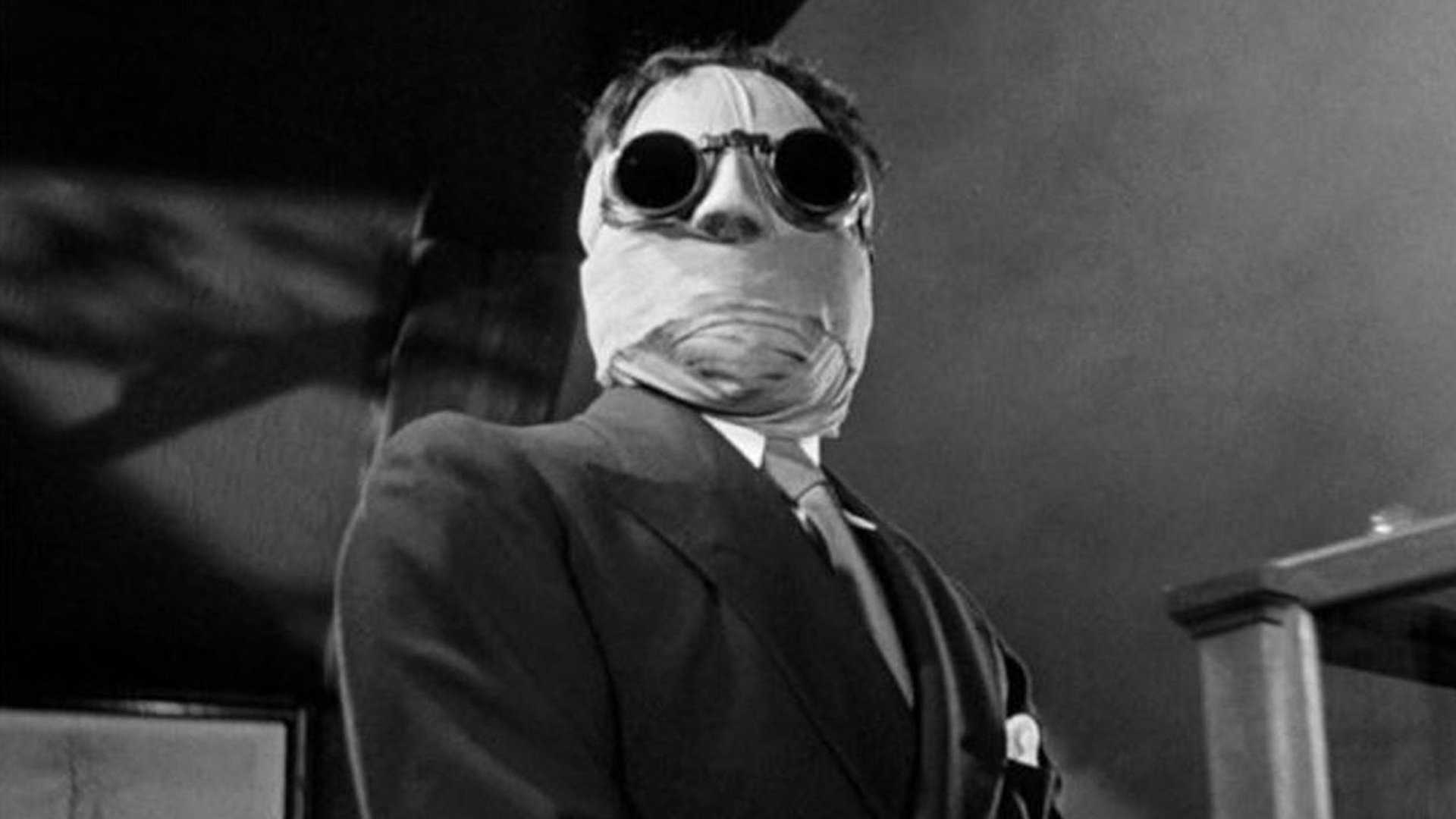It alters you, changes you.
There's a snow storm blowing ferociously, a man trundles towards a signpost that reads Iping. He enters a hostelry called The Lions Head, the patrons of the bar fall silent for the man is bound in bandages. He tells, not asks, the landlady; "I want a room with a fire". This man is Dr. Jack Griffin, soon to wreak havoc and be known as The Invisible Man.
One of the leading lights of the Universal Monster collection of films that terrified and enthralled audiences back in the day. Directed by genre master James Whale, The Invisible Man is a slick fusion of dark humour, berserker science and genuine evil. Quite a feat for a film released in 1933, even more so when one samples the effects used in the piece. Effects that are still today holding up so well they put to shame some of the toy like expensive tricks used by the modern wave of film makers. John P. Fulton take a bow sir.
After Boris Karloff had turned down the chance to play the good doctor gone crazy, on account of the role calling for voice work throughout the film only, except a snippet at the finale, so Whale turned to Claude Rains. Small in stature but silky in voice, Rains clearly sensed an opportunity to launch himself into Hollywood. It may well be, with Whale's expert guidance of course, that he owes his whole career to that 30 second appearance of his face at the end of the film? As was his want, Whale filled out the support cast with odd ball eccentrics that are acted adroitly by the British & Irish thespians. Una O'Connor, Forrester Harvey, Edward E. Clive and Henry Travers are memorable. While American Gloria Stuart as the power insane Griffin's love interest is radiant with what little she has to do.
Based on the now famous story written by H.G. Wells, Whale and R. C. Sheriff's (writer) version remains the definitive Invisible Man adaptation. There's some changes such as the time it is set, and Griffin is not the lunatic he is in the film, which is something that Wells was not too pleased about in spite of liking the film as a whole, but it's still very tight to the source. Sequels, TV series and other modern day adaptations would follow it, but none are as shrewd or as chilling as Whale's daddy is. 9/10


